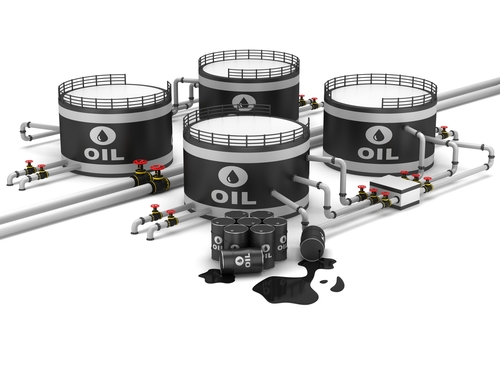SPCC Violations Underscore Importance of Facility Response Plans
 |
In December 2014, the U.S. Environmental Protection Agency (EPA) announced a settlement with an Alaska-based oil field services company for multiple violations of the SPCC rule, including failure to submit an FRP.
Under the SPCC regulations, there are two scenarios that require preparation and submission of an FRP:
1. A facility has a total oil storage capacity greater than or equal to 42,000 gallons (gal), and it transfers oil over water to/from vessels; or
2. A facility has a total oil storage capacity greater than or equal to 1 million gal and meets one of the following conditions:
- Does not have sufficient secondary containment for each aboveground storage area;
- Is located at a distance such that a discharge from the facility could cause “injury” to fish, wildlife, and sensitive environments;
- Is located at a distance such that a discharge from the facility would shut down a public drinking water intake; or
- Has had, within the past 5 years, a reportable discharge greater than or equal to 10,000 gal.
Forget expensive calls to lawyers and consultants. With Enviro.BLR.com, you get instant access, 24/7. Try it out today and get the 2015 EHS Salary Guide, absolutely free. Download Now.
According to the EPA, the facility met the FRP requirements because it stored more than 1 million gal of oil and was located within a quarter mile of Colleen Lake, and the facility “abuts and/or is adjacent to wetlands that have a direct hydrologic connection to Colleen Lake.” As a result, the facility was determined to be located such that it could reasonably be expected to cause substantial harm to the environment by discharging oil into or on the navigable waters or adjoining shorelines, and could cause injury to fish and wildlife and sensitive environments.
At the time of the EPA inspection, the facility had more than 24 aboveground oil storage tanks in service, each with a capacity of at least 55 gal and containing a variety of oil products, including aviation fuel, diesel fuel, and unleaded gasoline. Combined, the storage capacity exceeded 1 million gal.
The alleged violations were discovered during an SPCC and FRP inspection in August 2011. Although the facility did have an SPCC Plan, the EPA found the owner did not submit a required FRP before increasing the facility’s total oil capacity to 1 million gal or more. The EPA also alleged several other related violations, including:
- Failure to adequately train facility personnel to respond to an oil discharge, which the EPA notes was realized when, “At the time of the inspection, personnel at the Facility were unable to answer fundamental questions about how the Facility would respond to an oil spill”; and
- Failure to adequately train personnel at the facility about the contents of the facility’s SPCC Plan; discharge protocols; or applicable pollution control laws, rules, and regulations, which, again, were discovered when personnel were unable to answer applicable questions.
Everything You Need for Environmental Compliance
Enviro.BLR.com puts everything you need at your fingertips, including practical RCRA, CAA, CWA, hazardous waste regulatory analysis and activity, news, and compliance tools. Try it at no cost or risk and get a FREE report.
In addition, the facility also had a pipe run that was used to transport jet fuel to a tarmac fueling area at a nearby airport, most of which was outside the facility’s secondary containment areas. The EPA found the company failed “to provide appropriate containment and/or diversionary structures or equipment capable of containing oil to prevent the potential discharge of oil from the facility before cleanup occurred.”
In the settlement, the company agreed to pay a penalty of $37,500 and has come into compliance with SPCC regulations.
